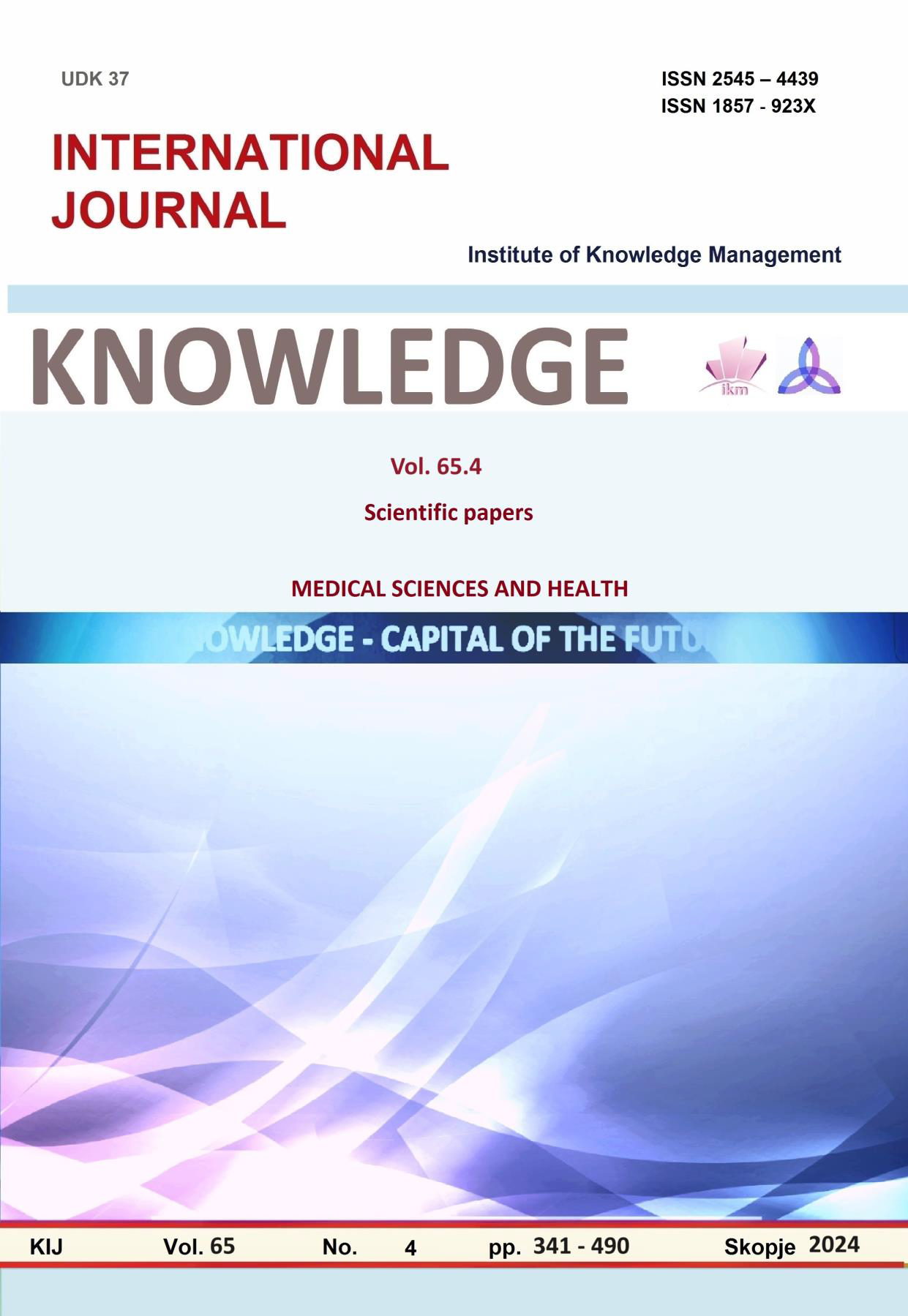VALIDATION OF PRODUCTION AND PROCESSING OF CANNABIS FOR MEDICINAL PURPOSES
Keywords:
herb, bulk product, Cannabis sativa flos, yield, process parameters, cannabinoidsAbstract
Cannabis is a historic, multidimensional and sometimes controversial plant. Its versatility and utility has fueled all kinds of industries and products, especially medicinal applications.
Medicinal cannabis is a therapy that has gained much national attention in recent years. Controversies surrounding the legal, ethical and social implications associated with use; safe application, packaging and dispensing; positive and negative health outcomes attributed to the use of cannabis, as well as therapeutic indications based on limited clinical data, are part of the complexity associated with this treatment. In North Macedonia, the production and application of cannabis for medicinal use was approved in year 2016.
Cannabis consists of more than 120 components, the most well-known and with therapeutic application are the cannabinoids. Cannabidiol (CBD) and tetrahydrocannabinol (THC) are the two most well-known and researched cannabinoids. THC is responsible for the psychoactivity, which many people associate with cannabis, while CBD is a non-intoxicating, non-euphoric component that can be found in oils, gums, drinks and other products for consumption and medicinal purposes.
The production and processing of cannabis for medicinal purposes in North Macedonia, as well as in Europe, are subject to the rules and principles of Good Manufacturing Practice (GMP). For its production and processing, it is necessary to apply the guidelines according to Annex 7 Production of herbal medicines (EudraLex, 2009).
The purpose of this study is the validation and evaluation of the production processes, i.e. the processing of cannabis flower for medicinal purposes from the harvesting process to its packaging in a bulk product, which will determine and establish norms and parameters, that are further considered as repeatable and established for any subsequent production, and processing of cannabis for medicinal purposes. These processes include: harvesting, trimming, drying and bulk packing, as well as analysis of the bulk product.
For the realization of the study, three validation batches of the production and processing processes were carried out, in the production premises of the HAPA pharm subsidiary, located in the village Spanchevo, Cheshinovo - Obleshevo.
The results of the performed validation showed that the production and processing processes were achieved, according to the previously set theoretical expectations and yields, established according to the Technological File. The whole compact flowers were obtained, from which the "sugar leaves" were removed by the trimming process, then dried in the stipulated period of time, at a temperature of 35 - 40oC, properly packed in 1000 g balk bags. The results of the performed analyzes are in accordance with the product specification, without OOS deviations.
The process of production and processing of cannabis flower for medicinal purposes is a complex work for which additional and new approaches and changes can be worked on in the long term, on the already established basis, in order to further improve and simplify the process, and with one goal, to obtain a quality, efficient and safe product, both for direct application and for further processing.
References
Al Ubeed, H. M. S., Wills, R. B. H., & Chandrapala, J. (2022). Post-Harvest Operations to Generate High-Quality Medicinal Cannabis Products: A Systemic Review. Molecules (Basel, Switzerland), 27(5), 1719. https://doi.org/10.3390/molecules27051719
Blake A, Nahtigal I. (2019). The evolving landscape of cannabis edibles. Current Opinion in Food Science, 25–31(28), 2214-7993. , https://doi.org/10.1016/j.cofs.2019.03.009
Chandra, S., Lata, H., ElSohly, M. A., Walker, L. A., & Potter, D. (2017). Cannabis cultivation: Methodological issues for obtaining medical-grade product. Epilepsy & behavior: E&B, 70(Pt B), 302–312. https://doi.org/10.1016/j.yebeh.2016.11.029
Coffman, C., & Gentner, W. (1974). Cannabis sativa L.: Effect of drying time and temperature on cannabinoid profile of stored leaf tissue. Bull. Narc. 26:68––70.
Das, P. C., Vista, A. R., Tabil, L. G., & Baik, O. D. (2022). Postharvest Operations of Cannabis and Their Effect on Cannabinoid Content: A Review. Bioengineering (Basel, Switzerland), 9(8), 364. https://doi.org/10.3390/bioengineering9080364
Jin, D., Jin, S. and Chen, J. (2019) Cannabis Indoor Growing Conditions, Management Practices, and Post-Harvest Treatment: A Review. American Journal of Plant Sciences, 10, 925-946. doi: 10.4236/ajps.2019.106067
Lazarjani, M. P., Young, O., Kebede, L., & Seyfoddin, A. (2021). Processing and extraction methods of medicinal cannabis: a narrative review. Journal of cannabis research, 3(1), 32. https://doi.org/10.1186/s42238-021-00087-9
Punja, Z.K., Collyer, D., Scott, C., Lung, S., Holmes, J., & Sutton, D. (2019). Pathogens and molds affecting production and quality of Cannabis sativa L. Front. Plant Sci. 10:1120. doi: 10.3389/fpls.2019.01120
Robertson, K. J., Brar, R., Randhawa, P., Stark, C., & Baroutian, S. (2023). Opportunities and challenges in waste management within the medicinal cannabis sector. Industrial Crops and Products, 197(Complete). https://doi.org/10.1016/j.indcrop.2023.116639
Summers, H. M., Sproul, E., & Quinn, J. C. (2021). The greenhouse gas emissions of indoor cannabis production in the United States. Nature Sustainability, 4(7), 644–650. doi:10.1038/s41893-021-00691-w
Veit M. (2023). Quality Requirements for Medicinal Cannabis and Respective Products in the European Union - Status Quo. Planta medica, 89(8), 808–823. https://doi.org/10.1055/a-1808-9708





